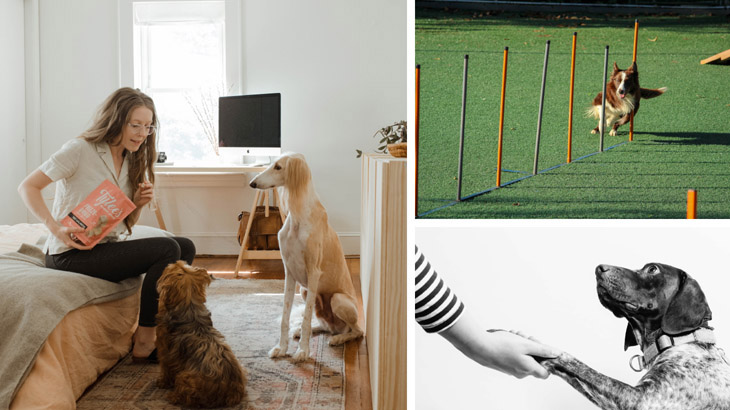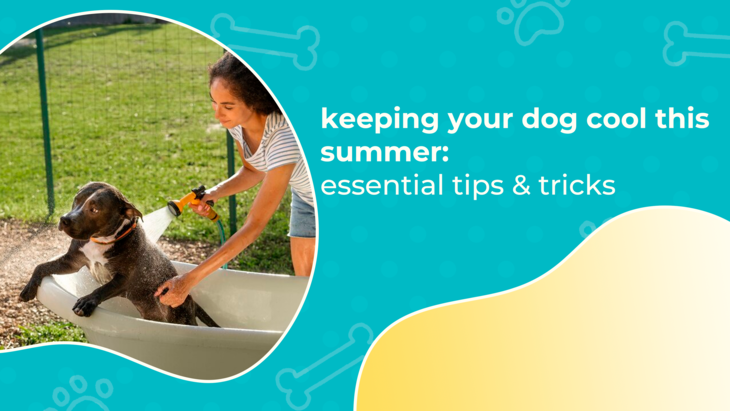The best way to foster a well-behaved dog is to build a trusting relationship with it. Your dog should know it needs to listen to you and want to do so. You can and should work on training at home. Of course, sometimes a little extra help is necessary from Dog Training. That's where professional trainers come in.
Most people love their furry companions. However, not every moment is enjoyable when your dog isn't trained to behave in specific ways or avoid unwanted behaviours. Dogs are lovely creatures who bring us so much joy. It's always good to remember that dogs must learn to behave appropriately. However, it's also worth contacting a professional and availing of their pet care services.
How To Completely Train Your Dog? Making training part of your usual pet routine makes it easier to fit in many small sessions. For example, ask your dog to sit or respond to another command before you give them their dinner, take them out for a walk, or play with them. Here are a few tips for training your dog thoroughly.
Tips For Complete Dog Training
Obedience Training Rewards
Dogs are smart enough to learn the behaviours that you want them to have. They are also smart enough to understand what they can get away with. If you're wondering how to train a dog with a specific behaviour, one of the most effective methods is to give them treats, praise, or affection. Most importantly, the best reward to give them is the one they want the most. If they are food-motivated, charms might work better than praise.
If they crave attention from you, then affection might be the best reward.
The main point is consistently giving your dog rewards for your desired behaviour. Do not reward the behaviour you don't want. When your dog performs the behaviour, they should get their reward. If you ask them to lie down and don't give them a treat until they stand back up, they become confused. They won't know which behaviour the reward was for.
Consistency is the main factor
Being consistent in your training is incredibly important. This includes consistently training your dog—for example, always using the same word and intonation when asking them to do something. Equally important is for everyone in your household to be on the same page.
Dogs need consistency to learn new habits, so if you never let the dog on the couch, but your partner does, your pup will end up confused.
Train Often
Short training sessions repeated throughout the day are much more effective than longer ones. Dogs often struggle to generalize commands to other places or situations, so repeating your training sessions in multiple locations is helpful. This is possible with different people and varying levels of distraction so that your pup learns to respond correctly to the same command.
Use Positive Reinforcement Techniques
Almost all vets agree that positive reinforcement training is the most effective method of dog training. Positive reinforcement training essentially focuses on rewarding your pet for good behaviour rather than punishing bad behaviour. Whenever your dog demonstrates good behaviour and responds positively to your commands, reward them.
You're reinforcing the association between good behaviour and good things by rewarding good behaviour. It's also essential to ensure you're not inadvertently rewarding unwanted behaviour. For example, if your dog barks at you to play or jump up to say hello, don't acknowledge it or give in, as this reinforces terrible behaviour. Instead, wait until they're calmer before giving them attention.
Control Consequences Effectively
When using reward-based training, your dog needs to understand that there are consequences for behaving in a way you don't like. Here the effects are to withhold their reward when they do something terrible. For instance, a dog that likes to jump up to greet its humans when they enter the house can be dangerous for an older adult.
Train them not to jump up at you, but do not greet them or give them attention if they jump up. You should turn around, walk back out the door, and continue doing this until the dog doesn't jump up. Keep a treat in your hand while you do this. When the dog doesn't jump, please give them the pleasure, and repeat the task until your dog doesn't jump up when you come in. It would help if you tried this with everyone your dog gets excited to see when they come into your house. This ensures that they give your dog the treat for the correct behaviour.
Training New Skills
When teaching your dog something new, remember that they have a two-year-old's attention span and intelligence. Your training sessions should be short and to the point. Limit them to 15 minutes. Focus on one task or behaviour so that they do not become confused.
Make sure you're using the same commands for your desired behaviours. If you use the same word but insert it into sentences differently every time you say it, your dog may not understand. For instance, if you want to train your dog to lie down, you will confuse them if you say "Lie down" one session and then say " lie down or no treat" later in the day. They might not know what to do.
Make It Fun
Training should be fun, both for you and your dog! Always keep it positive, and try mixing things up to keep it interesting, such as incorporating short play sessions into your training between repetitions. You could also consider training your dog to do tricks in addition to regular obedience training.
As humans, we naturally respond more enthusiastically to seeing a dog rolling over than we will to a plain old sit—our dogs pick up on that enthusiasm and end up loving to perform tricks for us!
Build Up in Stages
Starting small can be helpful, particularly when it comes to more complex behaviours like “stay” or behaviour modification. Try breaking behaviours down into smaller parts. For example, in the beginning, if you’re training, “come,” praise and reward your dog when they take even one step towards you. It’s much easier to add on steps and build up to the whole behaviour once your pup starts to get the hang of it.
Use Your Hands
Much as we’d wish they could, dogs can’t understand language the same way we do. Many dogs respond better to hand signals than verbal commands, so combine the two, or even begin with only hand signals and add the oral knowledge later.
Work Training Into Daily Life
Making training part of your usual pet routine makes it easier to fit in many small sessions. For example, ask your dog to sit or respond to another command before you give them their dinner, take them out for a walk, or play with them.
Praise the Small Things
Always praise your dog for any improvement, no matter how small. Getting caught up in the end goal of training is easy, but celebrating the little wins is just as important and will help keep you and your dog motivated.
Petscape provides pet care services to cats, dogs, fish, rabbits, and tortoises. Their top pet accommodations are Pets and Paws, Dogs and Cats, and Pet houses.
After all, if it's not food intended for a dog, it could put your animal's health at serious risk. Plus, from a practical point of view, replacing everything they chew up can also get very expensive. Get a trainer who will point you in the right direction, and your sofa will hopefully remain intact. Dog training is essential; if you have yet to train your dog, it could be much more noticeable than you think.







Post Comments